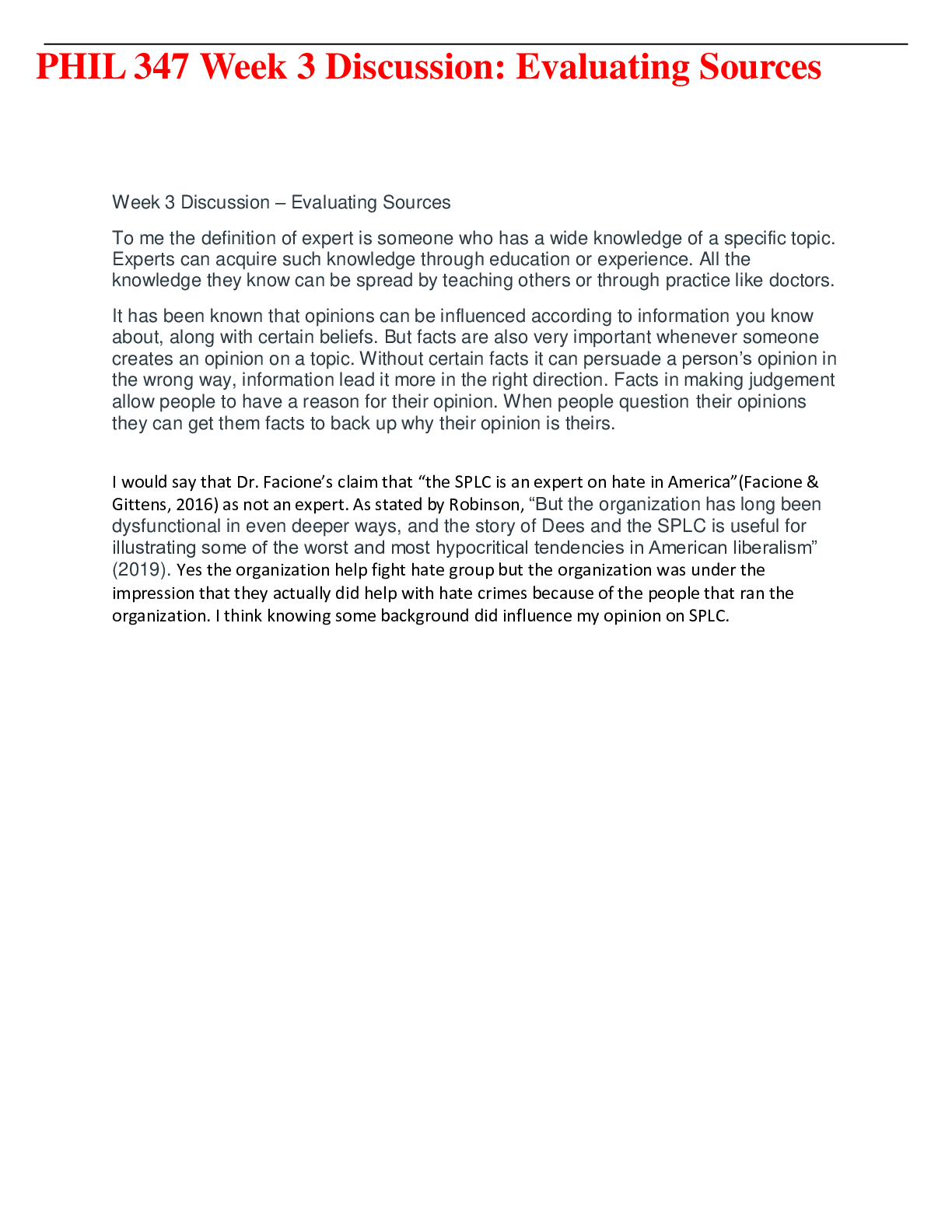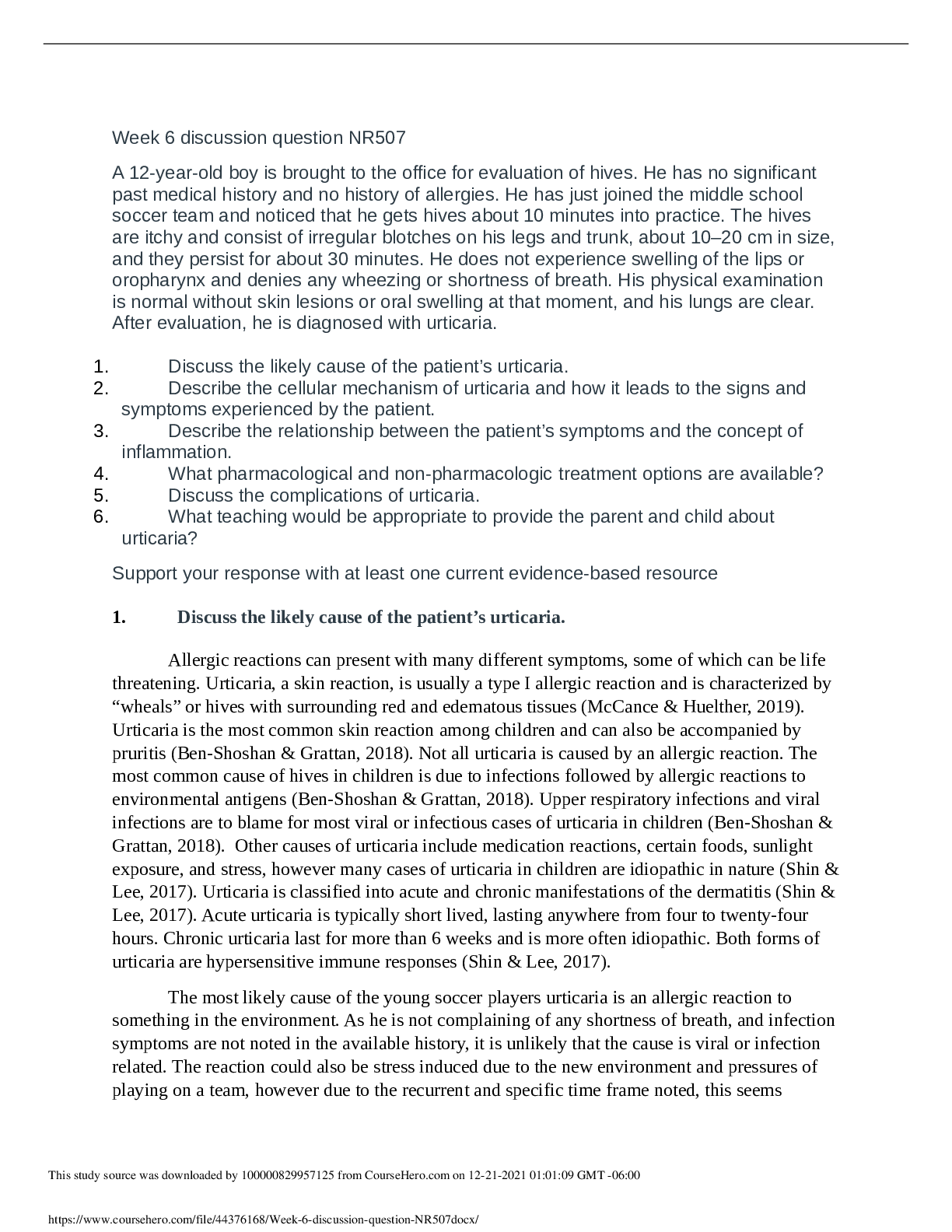*NURSING > DISCUSSION POST > NR_509_Week_3_class_discussion – Chamberlain College of Nursing | Neurologic, Musculoskeletal, and (All)
NR_509_Week_3_class_discussion – Chamberlain College of Nursing | Neurologic, Musculoskeletal, and Cardiopulmonary Assessment
Document Content and Description Below
NR_509_Week_3_class_discussion – Chamberlain College of Nursing Week 3: Neurologic, Musculoskeletal, and Cardiopulmonary Assessment 11 unread reply 6464 replies. Using a friend, family member... , or colleague, perform a neurovascular (include all cranial nerves), musculoskeletal, and cardiopulmonary (includes the heart, lungs, and peripheral vasculature) exam. Document the physical examination findings in the SOAP note format. Even though your patient may have abnormal findings, you must document the expected normal exam findings for the system. If you would like to include the abnormal findings they should be noted in parenthesis next to the normal expected findings. The complete subjective and objective sections must be included. You may include the assessment and plan portion of the SOAP note, but these sections will not be graded. You should devise a chief complaint so that you may document the OLDCART (HPI) data. You must use the chief complaint of headache, back pain, and cough. You should also focus the ROS based on the patient’s chief complaint and the body systems being examined. Refer to the SOAP Note Format document in Course Resources as necessary. This will be the same format that faculty will follow during the immersion weekend. * There are videos of the exams to be performed at immersion in Modules → Introduction and Resources→ Immersion section. Also the immersion evaluation forms are located in the Course Resources section. They should be reviewed and practiced often. This topic was locked Jul 23 at 11:59pm. Search entries or author Filter replies by unreadUnread Collapse replies Expand replies Subscribed • Tiffany Lunsford Tiffany Lunsford Jul 16, 2017Jul 16 at 7:20pm Manage Discussion Entry Class, Welcome to week Three! This week, we are focusing on neurological, musculoskeletal and cardiopulmonary exams. Please follow the discussion question and grading rubric closely, I have also posted additional helpful guidance. Please remember what goes in the ROS (Subjective) vs. the Physical Exam (Objective). Here are the following course outcomes to assist in focusing this week: 3: Demonstrate knowledge required to perform a focused health history and examination for developmental, gender-related, age-specific, and special populations. (PO 1, 5) 6: Differentiate normal from abnormal findings. (PO 1, 4) 8: Adapt history and physical examination to the needs of the patient, i.e., pediatric versus geriatric patient (PO 1,4,7) Class, I wish to give some extra guidance to practicing, performing the assessments and posting your assessment for Neurological, Musculoskeletal and Cardiopulmonary systems. These systems should include detail of what all findings (normal or if your patient is with abnormal findings) would include for each of the assigned systems. When assessing the neurological system one area for example of detail would be cranial nerves which should include listing each one of them with some identification that shows that you know the assessment test for each cranial nerve. This detail should also be applied to other aspects of the Neurological examination such as finger to nose, heel to shin test, reflexes, level of consciousness, motor function etc…many more to include…please refer to both texts for other areas to be included. Cranial Nerve example (not all inclusive): no deficit to sense of smell (Olfactory CN1) upon the patient patent nares through ability of sniffing bilateral nares, able to identify odors such as coffee and peppermint. For Musculoskeletal, it goes beyond inclusion of range of motion and should include all maneuvers that show no deficits/deficits (upper and lower extremities, cervical spine- as well as other aspects of the MS exam). MS example (not all inclusive): ballottement, bulge sign, phalen test, ROM all areas (with degrees), McMurray, valgus, drawer, noted or not noted Genu varum etc…..please refer to both texts for other areas to be included. Cardiovascular example (not all inclusive): physical exam to the thorax, lungs, and vascular system. Many of you will be more comfortable with these areas because you have been wielding a stethoscope for some time. However, learning things like whispered pectoriloquy and broncophony (not all inclusive items to include) take practice. Please ensure to read assigned readings and watch the video for this week. Doing this assignment in such detail will help at Immersion weekend when you have to show knowledge of these assessments and how to perform each test! Note about diagnosis/differential diagnoses: the primary diagnosis should be included in the assessment while if there are any other differential diagnoses being considered; students should list them in the treatment plan. Dr. Lunsford • Collapse SubdiscussionSarah Gray Sarah Gray Jul 17, 2017Jul 17 at 3:16pm Manage Discussion Entry Dr. Lunsford and Classmates Patient Information: JNG,38, Male, Caucasian, United Healthcare S. CC “Headache, back pain and cough” HPI: Headache: Onset: 1 week ago Location: temporal area Duration: on and off Characteristics: throbbing and pressure feeling behind eyes Aggravating Factors: reading and too much screen time Relieving Factors: dark and quit room Treatment: ibuprofen Back pain: Onset: 3 weeks ago Location: Lumbar area both side of spine Duration: present most of the time, worse in the morning Characteristics: ache tight feeling, difficult to bend over at times, non-radiating Aggravating Factors: sedentary time Relieving Factors: going for a walk and stretching Treatment: ibuprofen Cough: Onset: 3 days ago Location: chest Duration: on and off throughout day Characteristics: dry nonproductive, self-limiting Aggravating Factors: talking too much Reliving Factors: rest and hydration Treatment: none Current Medications: ♣ Nexium 2o mg daily for acid reflux ♣ Chantix 0.5 mg per day for smoking cessation with 2 weeks left o Ibuprofen 400 mg every 6 hours as needed for back pain and headache Allergies: no known allergies to food or drugs and no know allergy to a specific environmental allergy. PMHx: o questionable GERD with no official diagnosis o appendectomy 30 years ago o wisdom teeth removed approx. 20 years ago o positive history of chicken pox, no other hospitalizations, o hepatitis B vaccine up to date, unknown last DTap o refused flu vaccine o high school graduate o every 6 month dental cleanings o Soc Hx: JNG is a waiter at a restaurant and a culinary arts student, playing guitar and writing music are JNG hobbies, rescued a puppy one year ago, he is a recovering alcoholic for 4 years and is working toward quitting smoking with Chantix, no other elicit drugs, JNG is married with no children, JNG states dinking an adequate amount of water and eats a healthy diet including fruits and vegetables, JNG used to run 3 miles 4 days a week but is no longer able to. He wears his seatbelt all the time, He lives in an apartment and smoke detectors and co2 detectors are in working order. JNG is red headed, fair complexion and has many freckles and regular use of sunscreen encouraged. Fam Hx: o paternal grandfather: Barrett’s esophagus, PVD with amputation o Paternal grandmother: passed from unknown cancer o Maternal grandparents: unknown health history\ o Father: no health issues o Mother: alcoholic, tremors with undiagnosed reason, anxiety o Brothers: adopted with no health issues ROS: CONSTITUTIONAL: No weight loss, fever, chills, sleep disturbances, night sweats, weakness or fatigue. HEENT: o Head: no trauma or dizziness, headache present o Eyes: No visual loss, blurred vision, double vision or yellow sclerae glasses present. o Ears: no hearing loss, dizziness, pain or discharge o Nose: present, no drainage, o Throat: no bleeding gums, voice changes swallowing difficulty, or sore throat, dental appliance present SKIN: no rash, many freckles noted CARDIOVASCULAR: No chest pain, chest pressure or chest discomfort. No palpitations or edema, dyspnea, orthopnea, syncope or edema, no leg pain or swelling, RESPIRATORY: No shortness of breath sputum. Nonproductive cough present, quit smoking 3 month ago after 20+ year pack a day, GASTROINTESTINAL: No anorexia, nausea, vomiting, melena or diarrhea, 1 soft BM every day, no jaundice, GENITOURINARY: no burning or frequency with urination, steady easy to start stream NEUROLOGICAL: No dizziness, syncope, paralysis, seizure, ataxia, numbness or tingling in the extremities. No change in bowel or bladder control. No difficulty speaking or swallowing MUSCULOSKELETAL: No muscle, joint pain or stiffness, swelling, instability, able to perform ADL’s and work safely, Lumbar region back pain HEMATOLOGIC: No anemia, bleeding or bruising. LYMPHATICS: No enlarged nodes. No history of splenectomy. PSYCHIATRIC: No history of depression or anxiety, Positive history of alcoholism ENDOCRINOLOGIC: No reports of sweating, cold or heat intolerance. No polyuria or polydipsia. ALLERGIES: No history of asthma, hives, eczema or rhinitis, worse congestion with outdoor time O. Physical exam: Vital sign: BP 120/80, HR 84, RR 20, Temp 98.7 F, o2 sat 98% on RA Constitutional: appears well developed, healthy weight, well kempt, alert and oriented x4 HEENT: o Head: appropriate size, shape, symmetry, scalp and hair well intact, o Eyes: PERRLA, intact extraocular movement, conjunctiva clear, red light reflex present o Ears: Bilat tympanic membrane gray, translucent and intact, no tenderness or inflammation, whisper test passed bilat, (wax present R>L) o Nose: no discharge, olfactory sense intact, (tenderness present over frontal and maxillary sinuses, inflammation noted bilat) o Throat: no erythema, drainage or abscess present, mucosa moist, gums intact, pharynx midline o Skin: no lesions, bruises or open areas, (scar to right lower quad of abdomen, rash to upper back) Cardiovascular: Heart rate and rhythm regular, no murmur, click, rubS3, S4, or gallop present, no edema, no JVD, no visible pulsations, heave or lift present, Pulses present and palpable 2+, no carotid bruit, apical impulse present at 5th ICS MCL, extremities are warm and pink, no swollen lymph nodes, Respiratory: Chest symmetrical, tactile fremitus equal bilaterally, no tenderness, lumps or lesions, resonance noted equally bilaterally, Lung sound clear without wheeze or rales, no SOB, Gastrointestinal: abdomen soft and flat, bowel sounds present x 4, no bruit noted, liver span 12 cm, splenic dullness noted, not palpable, no CVA tenderness, no other organomegaly or masses noted Genitourinary: No hernia, nodules, rashes, or discharge Neurologic: Mental status: Alert and oriented X4, answers question appropriately, recent and remote memory intact. Cranial nerves: o I: olfactory nerve intact, able to smell alcohol pad o II: Vision 20/20 bilaterally, peripheral fields intact by confrontation, optic fundus normal bilaterally o III, IV, VI: extraocular movement by cardinal positions of gaze intact bilaterally, no ptosis or nystagmus noted, PERRLA with pupil size of 2mm, palpebral fissures equal bilaterally, o V: Sensation intact bilaterally throughout face and equal jaw strength o VII: facial muscles intact and symmetric with smiling and puffed check test o VIII: whispered words heard bilaterally o IX, X: swallowing intact with positive gag reflex, uvula and soft palate rises midline, voice smooth and unstrained o XI: shoulder shrug, head movement intact and equal bilaterally, o XII: tongue midline with no tremors, lingual speech clear Motor Function: gait smooth and coordinated, tandem walk completed, negative arm drift with Romberg test, finger to nose and finger to finger smooth with eyes open and closed, no atrophy, weakness or tremors or contractures noted, full ROM of all extremities, Sensation: sharp, light and vibration intact to all extremities, Stereognosis: able to identify a safety pin, Kinesthesia intact Reflexes: bicep, tricep, brachioradialis, quadricep and Achilles reflex intact 2+, abdominal reflex intact, plantarflexion noted with plantar reflex Musculoskeletal: No weakness, instability, gait disturbance, ROM intact and equal, no joint swelling, tenderness or redness, no spinal deviation, movement smooth with no crepitus noted, equal strength to all extremities and able to maintain flexion with resistance Lymphatic: no enlarged lymph nodes, lymphedema Psychiatric: appears calm and cooperative with exam, asking appropriate questions In summary, this patient demonstrated a normal neurological and musculoskeletal exam with no worsening of symptoms. The headache relates mostly with a tension-type headache because there was no nausea, photophobia or phonophobia noted with migraines. Patients complaining of a headache that demonstrate a normal neurologic exam do not require further imaging or laboratory testing. Symptoms to take more seriously regarding a headache would include patient complains of first or worst headache, headache induced by cough or exertion, change in personality, older than fifty or tenderness over temporal artery (Hainer & Matheson, 2013). Managing his back would also not include imaging studies at this time but treatment with pharmacotherapy, cognitive behavior therapy, spinal manipulation and/or lifestyle modification should be initiated. NSAIDS and muscle relaxants would be my first choice but if ineffective an opioid would be indicated. I would request a CMP to ensure his kidneys are in good working order with his recent use of ibuprofen and before initiating NAIDS (Herndon, Zoberi, & Gardner, 2015) References Hainer, B. L., & Matheson, E. M. (2013). Approach to acute headache in adults. American Family Physician, 87(10), 682-687. Herndon, C. M., Zoberi, K. S., & Gardner, B. J. (2015). Common questions about chronic low back pain. American Family Physician, 91(10), 708-714. NR509week3soapnote.docx o Collapse SubdiscussionTiffany Lunsford Tiffany Lunsford Jul 19, 2017Jul 19 at 8:18pm Manage Discussion Entry Hi Sarah, What exam findings would you expect to find if this patient presented with pneumonia? What are the current treatment guidelines for pneumonia treatment? Dr. L ♣ Collapse SubdiscussionSarah Gray Sarah Gray Jul 22, 2017Jul 22 at 10:41am Manage Discussion Entry Dr. Lunsford, Symptom of community acquired pneumonia can include cough, dyspnea, pleuritic pain, fever, chills or malaise. Increased need for supplemental oxygen may also be noted and should prompt the provider to admit the patient to the hospital. Chest radiography is still the gold standard for diagnosing pneumonia but lung ultrasonography is better at differentiating between pleural effusions, pneumothorax, pulmonary embolism and pulmonary contusion. Assessment finding can also include increased fremitus, uneven chest expansions, dullness on percussion and crackles on auscultation. The most commonly used assessment tool to determine treatment location is the CURB-65, patients with a score of 0-1 can me managed in the outpatient setting. Antibiotic therapy in the outpatient setting can include macrolides and fluoroquinolones if there was antibiotic exposure in the last three months followed by a beta-lactam plus macrolide. A five-day course is sufficient for a low-severity pneumonia based on the CURB-65 score and 10 days for moderate severity (Kaysin & Viera, 2016). References Kaysin, A., & Viera, A. J. (2016). Community-acquired pneumonia in adults: Diagnosis and management. American Family Physician, 94(9), 698-706. - - - - - - - - - - - - - - - - - - - - - - - - - - - - - - - - -- Non-pharmacology: Patient can lie down in a dark, quiet room when a migraine occurs or place a cold cloth over the eyes. Eating regularly scheduled meals is recommended as well as maintaining good fluid intake to avoid dehydration. Muscle relaxation, meditation, acupuncture, massage or biofeedback training can help to reduce stress. Pharmacology: In severe symptoms administration of these medications will be beneficial rizatriptan Tablets: 5, 10 mg 5 mg q2h not to exceed 30 mg daily. Motrin 800mg TID Sumatriptan Tablets: 25, 50, 100 mg 25, 50, 100 mg q2h and not to exceed 200 mg daily. Motrin 800 mg TID, aspirin and Tylenol 600 mg QID and not to exceed 2400 mg daily. This can be used to treat the mild to moderate form of migraine. Patient will be encouraged to seek emergency medical attention for new or worsening symptoms and to notify the treating physician if migraines change in pattern, frequency, or intensity. Cervico/Disco-genic pain (M.54.5) is usually worse in positions that involve prolonged sitting, especially in sitting positions with a protruded head posture or prolonged flexion. Bending positions also provoke cervicogenic pain. These positions can predispose KC to this differential diagnosis because of the type of work she does for a living especially sitting for too long at a time and analyzing data in a computer. Frequent changes of position provide relief. However, in cases of severe acute pain, a still position may be most comfortable. Pain worse upon awakening is probably related to using an unsuitable pillow or having adopted an inappropriate posture while sleeping. Treatment: Early referral to Physical Therapy can be very helpful. There are basic measures that have relieved back pain such as proper positioning in bed. Pharmacotherapy is the most common treatment for Low Back Pain as cited by (Goertz, 2016). Treatments with NSAIDs, gentle exercise, and maintenance of activity has proving effective. Patients may also find some acute relief lying on the floor supine with their lower legs and feet resting on a cushioned chair seat. When patient is not responding to treatment epidural glucocorticoid injection (e.g., with methylprednisolone) is a reasonable consideration for temporary relief. This can be administered by a certified nurse anesthetist under fluoroscopic guidance, a needle is inserted and advanced into the epidural space allowing injection of anesthetic and glucocorticosteroids to be administered. The use of topical anesthetic (e.g., lidocaine) helps to determine proper needle placement, immediate pain relief indicates proper positioning, but a worsening of radicular pain during the procedure is a sign of needle misplacement. Bronchitis (J40): can be defined as lower respiratory tract infection, especially in patients who present with a productive cough. The cough reflex removes large particles from the lower airways, and ciliated epithelium and mucus in the bronchial tree capture particles too small to be removed by coughing. Clinical manifestation includes cough due to mucous production and irritation of airways, wheezing due to inflammation within the airways. Differential diagnosis for cough can be extensive, including common and uncommon disorders as cited by (Weinberger, 2014). Work up will start with differentiating lower respiratory tract infection from the other causes of cough and from upper respiratory infection. Good physical exam is recommended.CAT Scan pending. Treatment: Suppression is not encouraged in patients with acute cough because the cough reflex remains an important defense mechanism. In most studies, cough resolves in 1 week regardless of treatment, and persistence of cough in 2 weeks was not unusual. Healthy patients with acute bronchitis should be treated with conservative measures for cough and counseled about the natural history of the disease. Expectorants such as guaifenesin may be helpful to some patients in loosening the sputum, although they have not been proven to make a significant difference in outcome. Prescribed Mucinex 600-1200 mg po q12h; maximum dose 2400 mg/day. References Chawla, J. (2016, April 19). Migraine headache. Medscape. Retrieved April 25, 2016, from http://emedicine.medscape.com/article/1142556-overview (RV) Goertz, M., Thorson, D., Bonsell, J., Bonte, B., Campbell, R., Haake, B., ... Timming, R. (2012). Adult acute and subacute low back pain. Institute for Clinical Systems Improvement. Retrieved November 8, 2016, from https://www.icsi.org/_asset/bjvqrj/LBP.pdf (G) Weinberger M, Fischer A. Differential diagnosis of chronic cough in children. Allergy Asthma Proc 2014; 35: 95–103. . o Catherine Orakpo Catherine Orakpo Jul 20, 2017Jul 20 at 8:27pm Manage Discussion Entry Hello Dr Lunsford & classmates, (Omitted data from previous submission) THE MENTAL STATUS EXAMINATION KC appears hygienic and well groomed, oriented x3 language is not slurred or abnormal. Good insight and affect noted. Cognitive skill intact. HEENT Inspect the face and no swelling noted, facial symmetry Palpated for sinus tenderness and noted facial grimacing, client acknowledged moderate pain in the frontal and temporal lobes. Inspected the neck and Palpated neck, lymph nodes not palpable. Auscultate bilateral carotid pulse. NEUROLOGICAL EXAM: ♣ I: olfactory nerve intact, client able to smell. ♣ II: Vision 20/40 bilaterally, peripheral fields intact by confrontation, optic fundus normal bilaterally. ♣ III, IV, VI: extraocular movement by cardinal positions of gaze intact bilaterally, no ptosis or nystagmus noted, PERRLA with pupil size of 3mm present, palpebral fissures equal bilaterally. ♣ V: Sensation intact bilaterally throughout face and equal jaw strength and movement. ♣ VII: facial muscles intact and symmetric. ♣ VIII: whispered words heard bilaterally ♣ IX, X: swallowing intact with positive gag reflex, uvula and soft palate rises midline. ♣ XI: Able to shrug shoulder, move head, equally bilaterally. ♣ XII: tongue midline, able to stick tongue out, no tremors noted and speech clear. o Christine Wood Christine Wood Jul 23, 2017Jul 23 at 12:59pm Manage Discussion Entry Catherine, I am happy to read your SOAP note, which offers non-pharmacologic treatments for resolution of the patient’s complaints. In my own practice, I hope to provide my patients with the opportunity utilize non-pharmacologic remedies, as well. While there are many non-pharmacologic remedies that can be offered, one that has shown some success is biofeedback. According to a study by Rausa et al. (2013), tension in the frontalis muscle was measured to set a baseline and then during the training (p. 3). This study found reduced frequency of headaches, as well as a reduction in the amount of pharmaceuticals needed (p. 6). In the area where I reside, biofeedback is not an easily accessible option. Patients would have to travel over an hour to receive treatments. However, there are other options that would be more readily available, such as regular massage therapy. Rene Rausa, M., Palomba, D., Cevoli, S., Lazzerini, L., Sancisi, E., Cortelli, P., & Pierangeli, G. (2016). Biofeedback in the prophylactic treatment of medication overuse headache: a pilot randomized controlled trial. Journal Of Headache & Pain, 17(1), 1-8. doi:10.1186/s10194-016-0679-9 Week3.Peer.Response.docx (1 like) o Sherry Boyd Sherry Boyd Jul 23, 2017Jul 23 at 7:59pm Manage Discussion Entry Catherine, Great job on your assessment! I found your post to be very informative. Migraines are something that I do not have any personal experience with. However, I have heard from friends and colleagues how disabling they can be. According to Diener, Charles, Goadsby, and Holle (2015) non-medical approaches to preventing a migraine include exercise, relaxation techniques, counselling, and stress management. These non-medical approaches to preventing migraines are not always effective. Prevention with medication needs to be discussed as necessary. Currently, B-blockers, anti-epileptics, calcium channel blockers, angiotensin II receptor antagonist inhibitors, and antidepressants are used for migraine prevention (Diener, Charles, Goadsby, & Holle, 2015). These medications have been shown to reduce the frequency of migraines by up to 50 % in approximately 45 % of patients (Diener, Charles, Goadsby, & Holle, 2015). The adverse effects of these medications contribute to a reduction in compliance. Research is underway to find a “better” medication to prevent migraines. One type of medication that is showing promising results is an antibody against calcitonin gene-related peptide receptor antagonist (CGRP) (Diener, Charles, Goadsby, & Holle, 2015). For those people who suffer with migraines, hopefully, research continues until there is a proven medication that is beneficial in preventing migraines. Sherry Boyd References Diener, H., Charles, A., Goadsby, P. J., & Holle, D. (2015). New therapeutic approaches for the prevention and treatment of migraine. The Lancet Neurology, 14(10), 1010-1022. doi:http://dx.doi.org.proxy.chamberlain.edu:8080/10.1016/S1474-4422 (15)00198-2 o Kara Flatt Kara Flatt Jul 23, 2017Jul 23 at 8:11pm Manage Discussion Entry Catherine- Thanks so much for your post! I really enjoyed reading your assessment and summary. My questions revolve around your diagnosis'. If you choose migraine and cervico-discogenic pain as your top 2 priorities, how do you explain the cough? Is is scant and intermitant to where we shouldn't even worry about it, or is it the dominating factor? As NPs I think it is important for us to see the whole picture. Thanks! -Kara • Collapse SubdiscussionSherry Boyd Sherry Boyd Jul 18, 2017Jul 18 at 11:59pm Manage Discussion Entry Dr. Lunsford and Class- SOAP Note T.B., 43 yr. old, Caucasian male, BCBS S. CC (chief complaint): Headache, back pain, and cough HPI: Onset: Cough began 6 days ago; back pain and headache began 2 days ago Location: Generalized cough, generalized mid back, generalized frontal headache Duration: Headache and back pain constant with varying degrees of discomfort, cough consistent Characteristics: Associated with fatigue Aggravating Factors: Coughing makes the headache and back pain worse Relieving Factors: OTC pain medication decreases the back pain and headache Treatment: Tylenol 650 mg PO every 4 hours for head and back pain; OTC Robitussin 2 teaspoons PO every 4 hours for cough Current Medications: Simvastatin 20 mg PO at bedtime; Zoloft 100 mg PO daily; Tylenol 650 mg PO every 4 hours as needed for pain; Robitussin cough syrup 2 teaspoons PO every 4 hours as needed for cough Allergies: No allergies to food, medication, or environment. PMHx: Last tetanus vaccine 2012. Last influenza vaccine October 2016. Surgeries include: tonsillectomy 2011 and ORIF right ankle 2016. Soc Hx: Works as a telecommunication specialist at AT & T. Married with 4 children. Drinks 2 beers approximately 3 times per week. Quit smoking cigarettes 15 years ago, currently uses an ecig. Denies illegal drug use. Fam Hx: Maternal grandmother: Parkinson’s; died in her late 80s from complications related to Parkinson’s disease. Maternal grandfather: Colon Cancer; died in his early 60s from colon cancer. Paternal grandmother: COPD, obesity; died in her early 70s from COPD. Paternal grandfather: died in his mid 60s from “blood” cancer Mother: hypertension, depression Father: alcoholism, anxiety, depression, hypertension Son; daughter 1: ADHD, anxiety Daughter 2; daughter 3: No health issues ROS: CONSTITUTIONAL: No weight loss, fever, chills, or weakness. Experiencing fatigue HEENT: Eyes: no difficulty with vision or double vision. No eye pain, discharge, lesions, or inflammation. No corrective lenses. EARS, NOSE, THROAT: No hearing loss, earaches, or drainage. No nasal discharge, congestion. No mouth lesions or pain. No dysphagia. SKIN: No rash or itching. CARIOVASCULAR: No chest pain, dyspnea with exertion, orthopnea, palpitations, or cyanosis. No nocturia or edema. (Has hyperlipidemia) RESPIRATORY: No pain with breathing, wheezing, or shortness of breath. Smoked cigarettes for 11 years x 1 ½ ppd. Pack years: 16.5. Quit smoking cigarettes15 years ago. Currently uses e cig. GASTROINTESTINAL: No anorexia, nausea, vomiting or diarrhea. Denies abdominal pain or bleeding. GENITOURINARY: Denies burning with urination, frequency, or inability to begin urinating. NEUROLOGICAL: No weakness, dizziness, tremors, memory loss, or paralysis. No numbness or tingling. No change in bowel or bladder control. Has headache. MUSCULOSKELETAL: No history of arthritis or gout. No joint pain, stiffness, deformity, or limited range of motion. No muscle pain or weakness. (Has joint pain and stiffness bilateral knees and ankles.) HEMATOLOGIC: No anemia, bleeding, or bruising. LYMPHATICS: No enlarged lymph nodes. No history of splenectomy. PSYCHIATRIC: No history of depression or anxiety (Being treated for depression). ENDCRINOLOGIC: No reports of sweating, cold or heat intolerance. No polyuria or polydipsia. ALLERGIES: No history of asthma, hives, eczema, or rhinitis. O. Physical Exam: VITAL SIGNS: BP 132/88 R ARM SITTING; 128/86 L ARM SITTING; T: 98.4; HR: 66; RR: 18; HT: 5’11”; WT 250 POUNDS CONSTITUTIONAL: Well nourished. Articulates clearly, ambulates without difficulty. No apparent distress. Alert and oriented x3. HEENT: HEAD: Normocephalic. No lumps, lesions, scaling, or tenderness. Facial features symmetrical. EYES: No discharge or crusting. Conjunctivae clear. Sclera white; no lesions or redness. Pupils: 3 mm resting, 2 mm constricted and equal bilaterally. PERRLA. EARS: Hearing intact. Heard whispered words bilaterally. No mass, lesions, or scaling on outer ear. No discharge. NOSE: No deformities or tenderness to palpation. Nares patent bilaterally. No discharge or congestion. Mucosa pink and intact. No parasinus tenderness upon palpation. MOUTH/THROAT: Mucosa and gingivae pink and intact. Uvula rises midline. Gag reflex intact. (Tonsils absent due to tonsillectomy.) NECK: Supple with full ROM. No masses or lymphadenopathy. Symmetric. Trachea midline. Thyroid nonpalpable. CARDIOVASCULAR: Jugular veins flat at 45 degrees. Carotid arteries +2 bilaterally, no bruits. S1-S2 not diminished or accentuated, no S3 or S4. No murmur. LUNGS/THORAX: Chest expansion symmetric. Tactile fremitus equal bilaterally. No tenderness with palpation. No lesions or lumps. Hyperresonance over lung fields and equal bilaterally. Respirations not labored. Vesicular breath sounds clear and equal over lung fields. ABDOMEN: Symmetric. Abdomen soft, bowel sounds present. No mass, tenderness, lymphadenopathy. MUSCLOSKELETAL: Smooth motion of temporomandibular joint. Full range of motion of neck without pain. No deformity, tenderness of vertebral column. Full extension. Full ROM of arms and legs bilaterally. Good muscle strength. Muscle flexion maintained against resistance. NEUROLOGIC: Alert. Oriented to person, place, and time. Speech is clear, easily understood. CRANIAL NERVES: 0. Visual acuity intact. Peripheral fields intact by confrontation. III, IV, VI: PERRLA. EOMs intact. V: Sensation intact bilaterally. Jaw strength strong, equal bilaterally. VII: Facial muscles intact, symmetric. VIII: Whispered words heard bilaterally. IX, X: Swallowing intact, gag reflex present, uvula rises midline. Voice smooth. XI: Head rotation and shoulder shrug equal and intact bilaterally. XII: Tongue protrudes midline. Speech clear and distinct. A. Each year, people seek medical attention for a cough. Coughing can be caused by many things. It is important for healthcare providers to treat the underlying issue that causes the cough as opposed to treating the cough itself. Based on the chief complaint this week, acute bronchitis is the chosen differential diagnosis. The majority of the time, acute bronchitis is caused by a virus (Kinkade & Long, 2016). Laboratory testing is usually not necessary to diagnose acute bronchitis. The headache and back pain is likely related to extensive coughing. Patients should be encouraged to increase their fluid intake, rest, stop smoking (if applicable), and use a humidifier to add moisture to the air (Hollier, 2016). Cough suppressants can be prescribed to provide night time relief of cough. Antibiotics are not recommended for a viral bronchitis (Hollier, 2016). References Hollier, A. (2016). Clinical Guidelines in Primary Care. Scott, LA: Advanced Practice Education Associates, Inc. Kinkade, S., & Long, N. A. (2016). Acute Bronchitis. American Family Physician, 94(7), 560-565. o Collapse SubdiscussionJessica Allen Jessica Allen Jul 20, 2017Jul 20 at 10:13pm Manage Discussion Entry Sherry, very good work! I chose acute bronchitis as the diagnosis this week as well. When reviewing the chief complaint, it sounded very familiar. I had bronchitis several times a year as a child. I know the coughing and pain all too well. I also read the Kinkade and Long article. I wasn't aware that cough is the most common illness seen in ambulatory care. Bronchitis can be confused or cover up other illnesses. It is important to review all symptoms and patient history to rule out pneumonia, asthma, or COPD. Acute bronchitis is self-limited and does not require antibiotics. Pneumonia is often treated with antibiotics. Differences in sputum and fever are another good way to differentiate between the two. A chest x-ray will show if the congestion is located in the bronchioles or in the lungs. Treatment should be over the counter medications and not antibiotics. Using antibiotics to treat viral bronchitis is ineffective and leads to antibiotic resistant strains of bronchitis. Over the counter medications used to treat the symptoms are far more helpful than antibiotics (Kinkade & Long, 2016). References Kinkade, S., & Long, N. A. (2016). Acute Bronchitis. American Family Physician, 94(7), 560-565. Jessica Allen ♣ Tiffany Lunsford Tiffany Lunsford Jul 22, 2017Jul 22 at 7:40pm Manage Discussion Entry Hi Jessica, Great point about the assessment differences with bronchitis and pneumonia. Sometimes we will need to prescribe medications for bronchitis, not just over the counter medications, such as albuterol or prednisone (or other steroids). You are completely correct about not treating the bronchitis with antibiotics. The only exception to this in my current practice is high risk COPD patients. Dr. L ♣ Sherry Boyd Sherry Boyd Jul 23, 2017Jul 23 at 6:42pm Manage Discussion Entry Jessica, Thank you for the informative response. I did read that bronchitis can be differentiated from other respiratory illnesses by the presence of sputum and fever. It is important to remember that not all illnesses require antibiotic therapy. Sherry o Collapse SubdiscussionElizabeth Booth Elizabeth Booth Jul 23, 2017Jul 23 at 10:25am Manage Discussion Entry Sherry, Like Jessica, I was also surprised to hear that cough is one of the most frequent complaints that patients have when seeking medical care from their primary care provider. I agree with your plan to provide your patient with symptomatic treatment only, rather than pacifying him with a prescription for antibiotics. Patients should be educated on the fact that antibiotics are not recommended based on the presence of purulent sputum or a change in its color. Rather, they are only indicated in cases where pneumonia is suspected, in which patients would display symptoms of tachycardia, tachypnea, fever, and an abnormal chest exam (rales and egophony). Over 23,000 patients die a year from antibiotic resistant infections (Harris, Hicks, & Qaseem, 2016). I would explain to my patient that I do not want him or her to be added to that number. Your plan will ensure that your patient receives proper evidence-based care. Elizabeth References Harris, A., Hicks, L., & Qaseem, A. (2016). Appropriate antibiotic use for acute respiratory tract infection in adults: Advice for high-value care from the American College of Physicians and the Centers for Disease Control and Prevention. Annals of Internal Medicine, 164(6), 425-434. doi:10.7326/M15-1840 NR509_Week 3_peer response.docx ♣ Sherry Boyd Sherry Boyd Jul 23, 2017Jul 23 at 6:45pm Manage Discussion Entry Elizabeth, Thank you for your response. Antibiotic resistant infections pose a serious risk to many patients. As healthcare providers, we are responsible to limit antibiotic prescriptions to only those illnesses that require antibiotics. Sherry • Jessica Allen Jessica Allen Jul 19, 2017Jul 19 at 12:30am Manage Discussion Entry Patient Information: V.R., 60, Female, Caucasian S. Chief Complaint: Patient presents today with complaints of “coughing so much it’s making her head and back hurt.” HPI: Cough began 4 days ago. Cough is intermittent and worsening gradually. She is unable to cough anything up, it’s a dry, hacking cough. Cough is causing her to have a headache and back pain. These symptoms began 1 day ago. Headache and back pain have been constantly aching since they began. Cough is worsened by activity of any kind, and milk products, and is improved with rest and OTC cough medication (Robitussin). Headache and back pain are worsened by activity and coughing. They are improved slightly with rest and OTC pain reliever (Ibuprofen). Current Medications: Premarin- 1.25 mg PO daily, began 14 years ago after hysterectomy to treat menopausal symptoms Gaviscon- 2-4 tablets PO every 6 hours PRN, began 8 years ago to treat acid reflux Robitussin- 10 ml PO every 4 hours PRN, began 3 days ago to treat cough Ibuprofen- 400 mg PO every 4-6 hours PRN, began 1 day ago to treat headache and back pain Allergies: NKA PMHx: Patient is up to date on required vaccinations. She does not remember when she had a tetanus shot last. She has never had the pneumonia or shingles vaccine. She has had tonsils and adenoids removed as a child and had chicken pox as a child. As an adult, she suffered from uterine and bladder prolapse, resulting in hysterectomy and mesh sling. She has been diagnosed with tendonitis in her left elbow several times. Soc Hx: Patient works in an office doing accounts payable. She sits/stands in front of a computer most of the day. She types all day as well. She works around 45 hours a week. Major hobbies include working in her yard and cooking out with family. Patient has never smoked or used illegal drugs. She drinks socially. She always wears her seatbelt in vehicles. She has working smoke and carbon monoxide detectors in her home. Fam Hx: Patient is genetically predisposed to osteoporosis, hypertension, acid reflux from her mother. No history of cancer, stroke, or diabetes in her family. Brother passed away in vehicle accident as a teenager. Sister is living with no major illness. Father suffered from alcoholism for many years. Her daughter also has acid reflux. ROS: Constitutional- No unexplained weight loss, no fever or chills noted, denies weakness or fatigue HEENT- Eyes: Patient wears reading glasses. Had laser eye surgery in the past for near sightedness. Denies blurred or double vision, sclerae are white. Ears, Nose, Throat: No hearing loss or ear pain. Denies congestion, sneezing, runny nose, or sore throat. She did have a cold a few weeks ago with congestion, sneezing, and a runny nose. Skin- Skin is clear, dry, and intact. No rashes noted. No wounds noted. Cardiovascular- Denies chest pain, pressure, or discomfort. Regular heart rate. No palpations noted. No edema noted. Respiratory- Inspection of posterior chest shows straight spinal process, symmetrical thorax, and muscles appropriate for age. Chest expands symmetrically. Skin color is pink and dry. No cyanosis or pallor. No diaphoresis. Fremitus most prominent between scapulae and around sternum and decreases lower in back. Resonance noted over lungs during percussion. Breath sounds clear in all quadrants. (Breath sounds clear over right and left lower quadrant, and right upper quadrant upon auscultation. Wheezing and crackles noted over left upper quadrant). Breast sounds present in all quadrants. No decreased breath sounds. Inspection of anterior chest wall shows ribs sloping downward and symmetrical spaces. Skin is pink and dry. No cyanosis or pallor. Respirations are regular at 18bpm. No retractions noted. No tenderness upon palpation. Slight wheezing auscultated in left upper quadrant. No other adventitious sounds noted. Pulse ox reading is 98%. Gastrointestinal- Bowl sounds noted in all four quadrants. Stomach is round and soft. Denies anorexia, vomiting, nausea, or vomiting. No abdominal pain upon palpation. No blood in stool. Skin is pink and dry. Genitourinary- Patient is post-menopausal. Denies pain or burning upon urination. One full term pregnancy with live vaginal birth. Child is still living. Neurological- No headache, dizziness, syncope, paralysis, ataxia, or numbness and tingling in extremities. (Patient complains of headache). No change in bowel or bladder control. Pupils are equal and reactive to light. No memory problems. Denies mood change, depression, or suicidal ideations. Musculoskeletal- No muscle, joint, or back pain noted. Denies stiffness of muscles. (Patient states she has back pain, muscular, in the upper back). Spine appears straight upon inspection. No injury noted. Hematologic- No anemia or blood clotting disorders. No abnormal bleeding or bruising. Lymphatics- No history of splenectomy. No enlarged nodes upon palpation. (Patient has enlarged cervical nodes). Psychiatric- No history of depression or anxiety. Endocrinologic- Denies sweating, heat intolerance, cold intolerance, polyuria, or polydipsia. Allergies- No history of asthma, hives, eczema, or rhinitis. Differential Diagnosis: Acute Bronchitis- Often caused by a viral infection. Cough is the predominant symptom. Other symptoms are nasal congestion, mucus production, dyspnea, and headache. Fever is not usually present. Chest wall pain can also be present. Auscultation and chest x-rays are used for diagnosis. Antihistamines and decongestants are used in combination to treat. Albuterol nebulizer or inhaler is used to loosen mucus as well. This patient is complaining of cough, headache, and back pain. She does not have a fever and is not coughing mucus up (Kinkade, S., & Long, N. A. 2016). Pneumonia- This is a concern globally. Microorganisms invade the lower respiratory tract. It is often bacterial. Symptoms are fever, chills, dehydration, fatigue, sweating, coughing, and chest pain. This is diagnosed by chest x-ray, auscultation, or sputum samples, or blood cultures. Antibiotics are often used to treat pneumonia. Albuterol inhalers and nebulizer can be used to treat cough as well (Colloniz, C., Martin-Loeches, I., Garcia-Vidal, C., San Jose, A., & Torres, A. 2016). References Colloniz, C., Martin-Loeches, I., Garcia-Vidal, C., San Jose, A., & Torres, A. (2016). Microbial etiology of pneumonia: Epidemiology, diagnosis and resistance patterns. International Journal of Molecular Sciences,17(2120). doi:10.3390/ijms17122120 Kinkade, S., & Long, N. A. (2016). Acute Bronchitis. American Family Physician, 94, 7th ser., 560-565. Retrieved July 18, 20147, from http://eds.b.ebscohost.com.proxy.chamberlain.edu:8080/eds/pdfviewer/pdfviewer?vid=2&sid=51d37dd0-e01f-4029-b8cc-9204f3030d4d%40sessionmgr102Links to an external site. Jessica Allen PreviousNext [Show More]
Last updated: 1 year ago
Preview 1 out of 131 pages
Instant download

Buy this document to get the full access instantly
Instant Download Access after purchase
Add to cartInstant download
Reviews( 0 )
Document information
Connected school, study & course
About the document
Uploaded On
Aug 14, 2020
Number of pages
131
Written in
Additional information
This document has been written for:
Uploaded
Aug 14, 2020
Downloads
0
Views
34

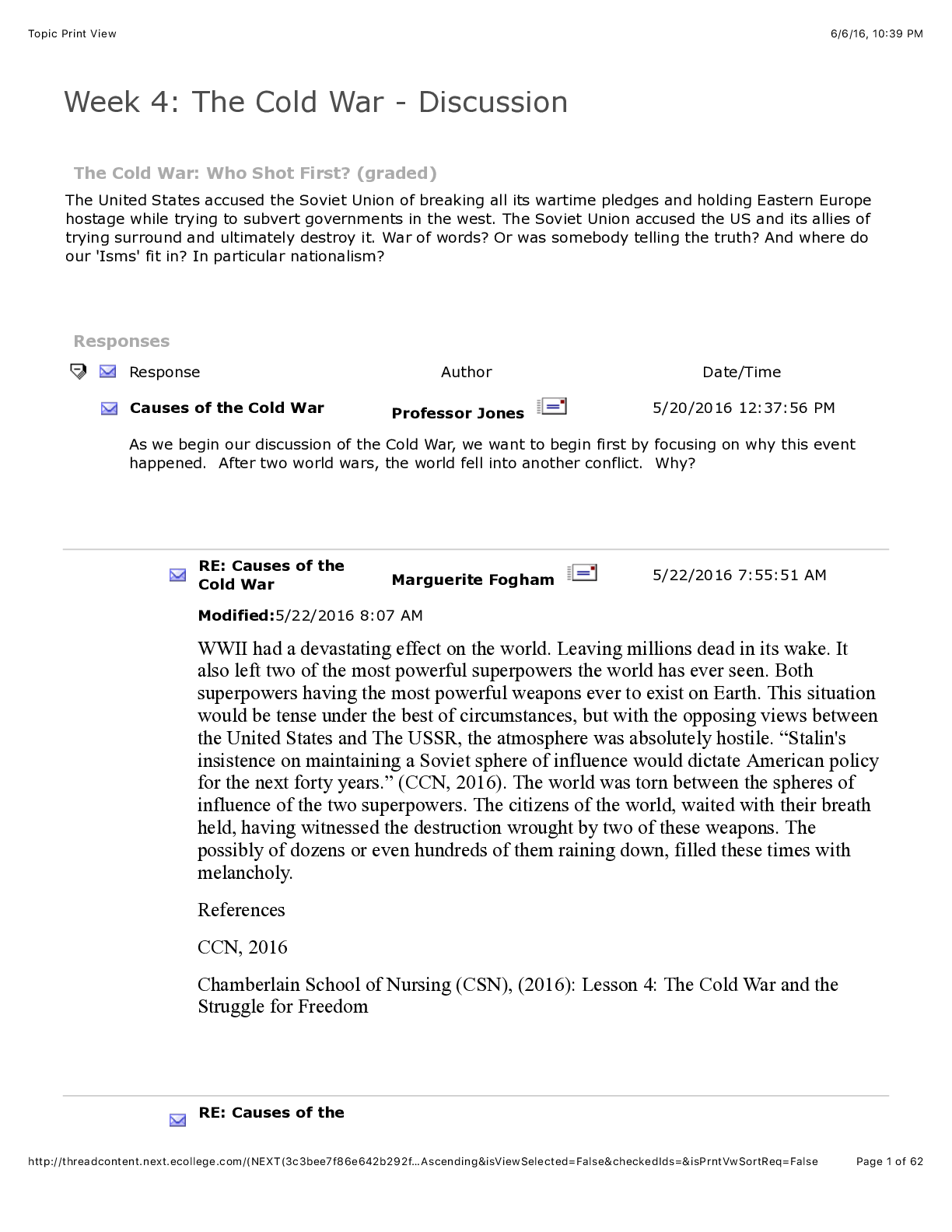
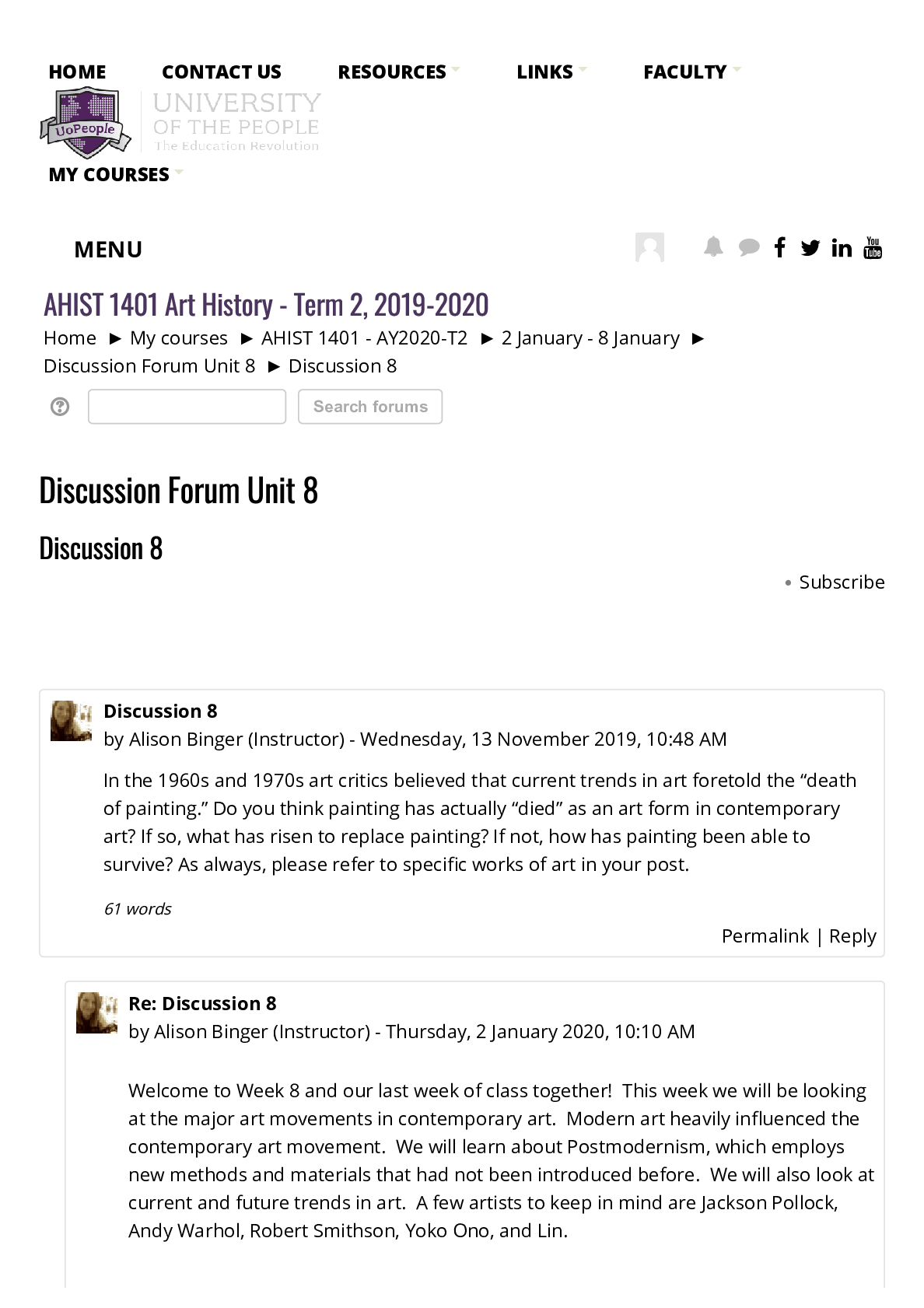
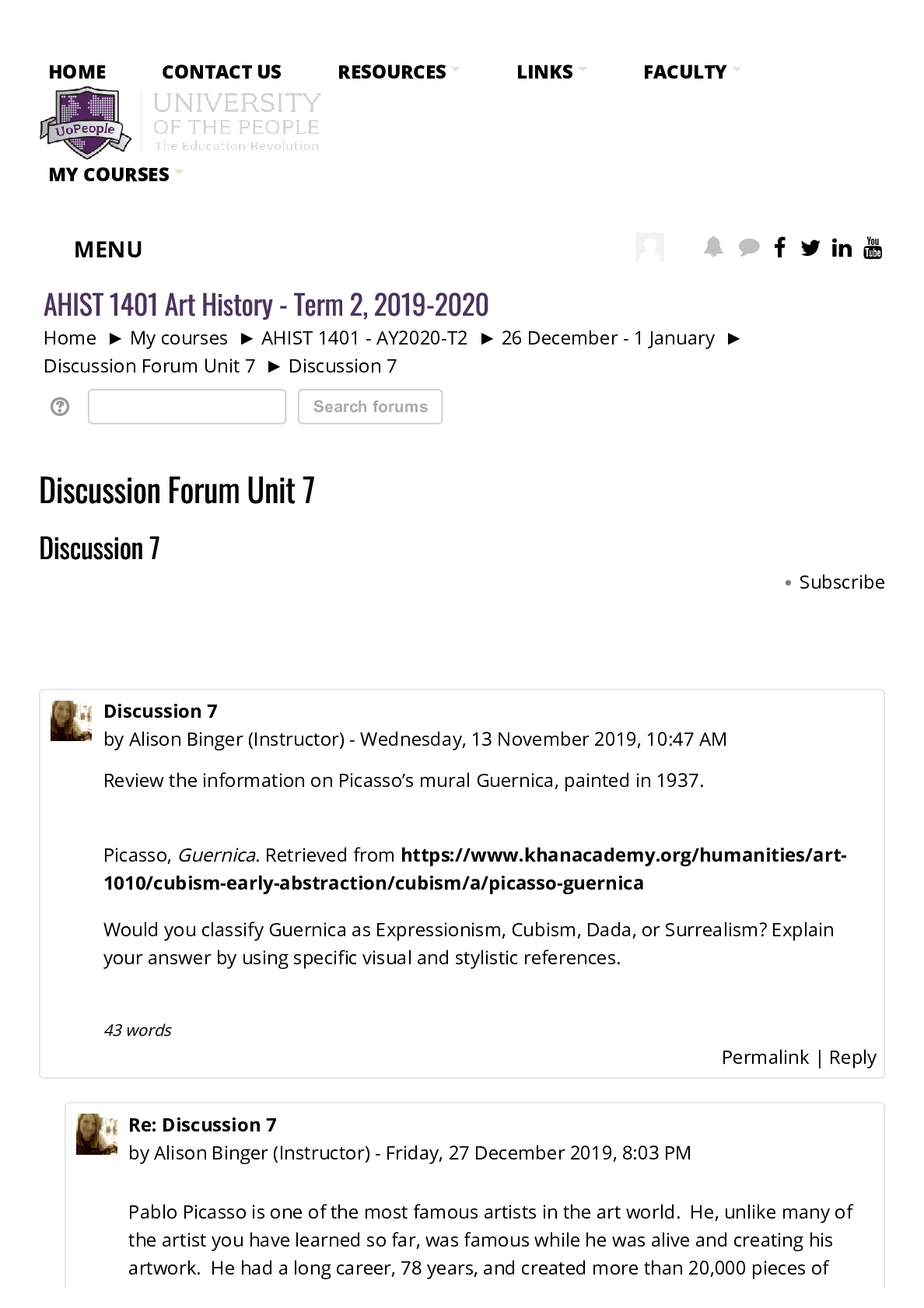
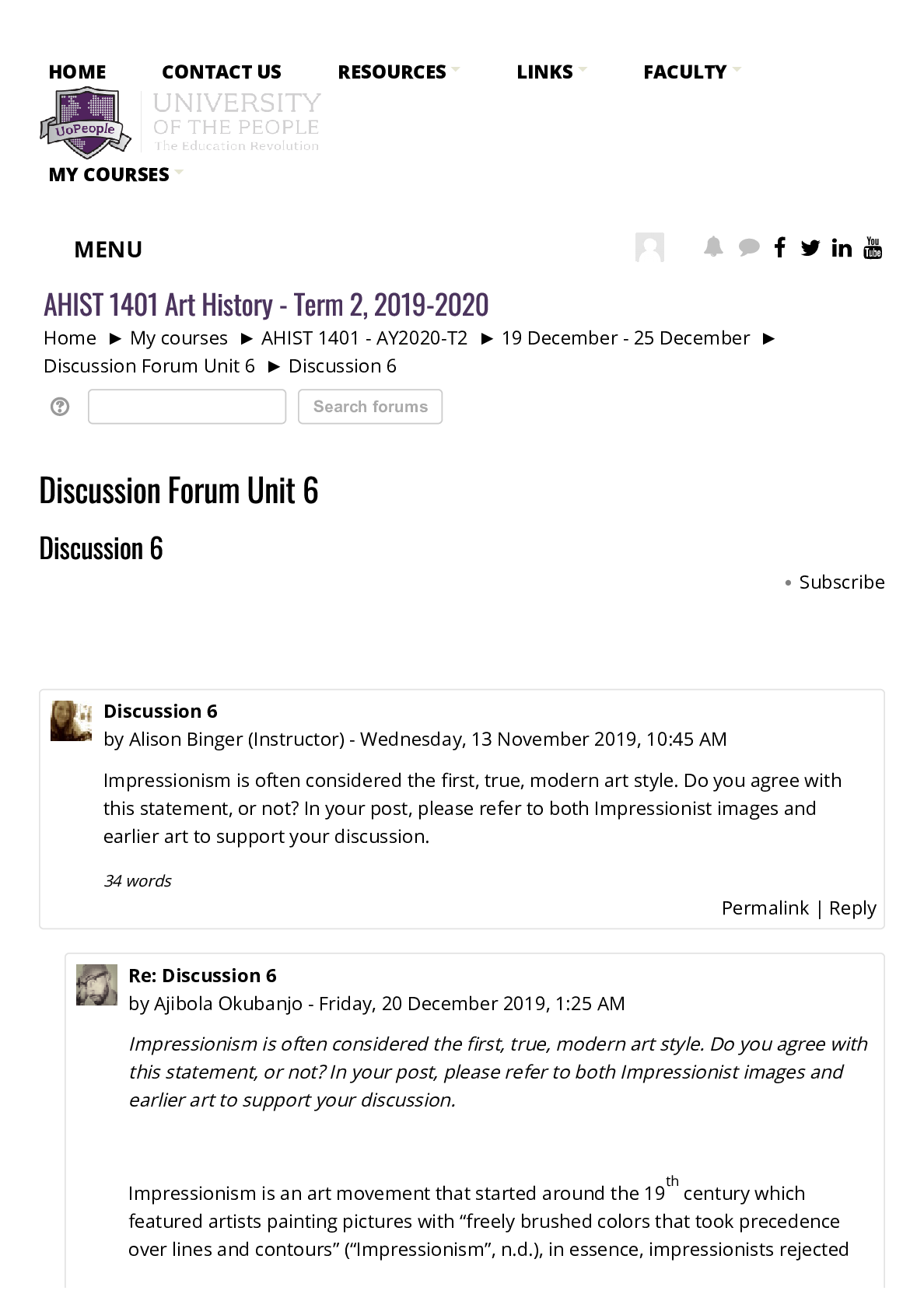

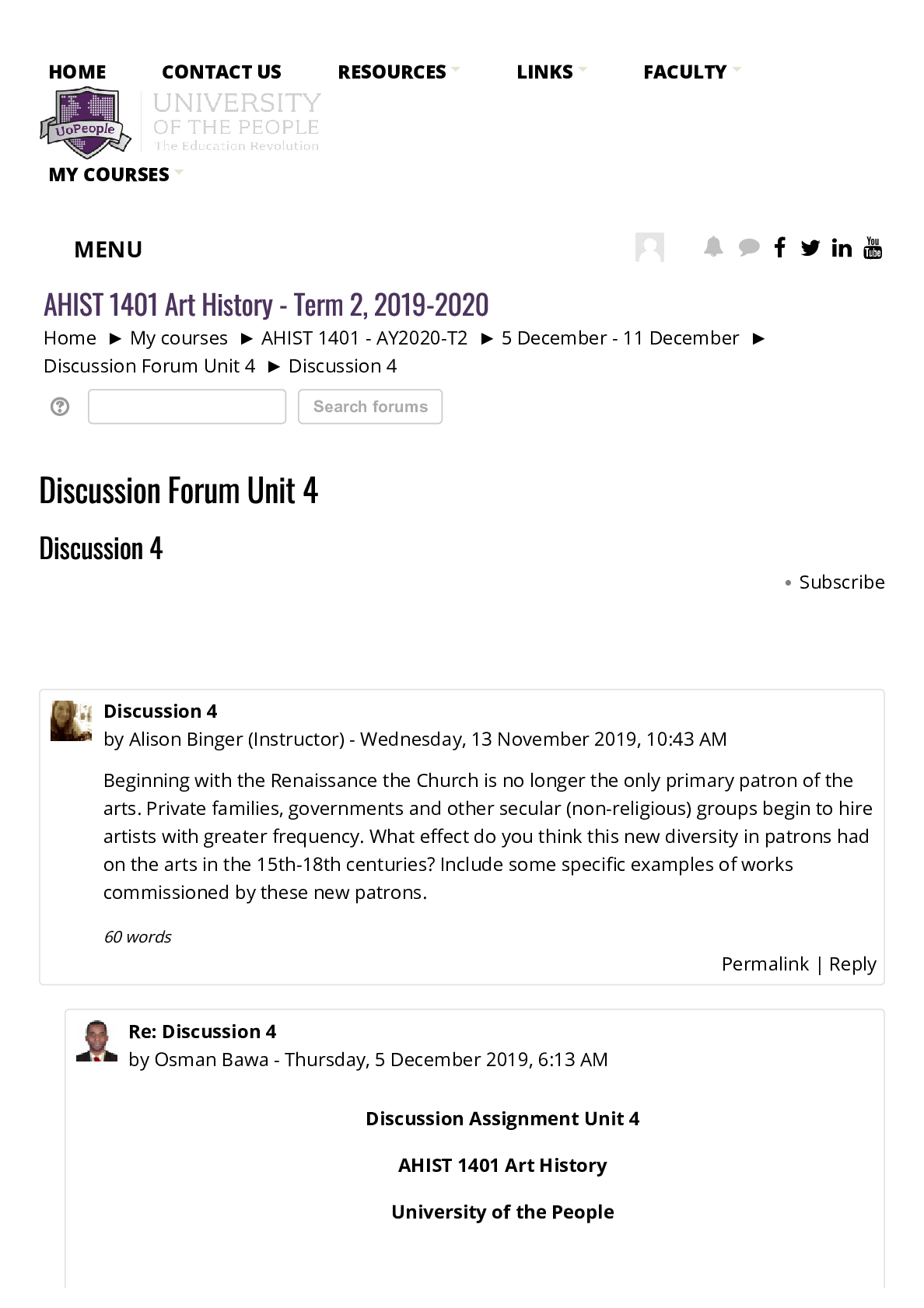
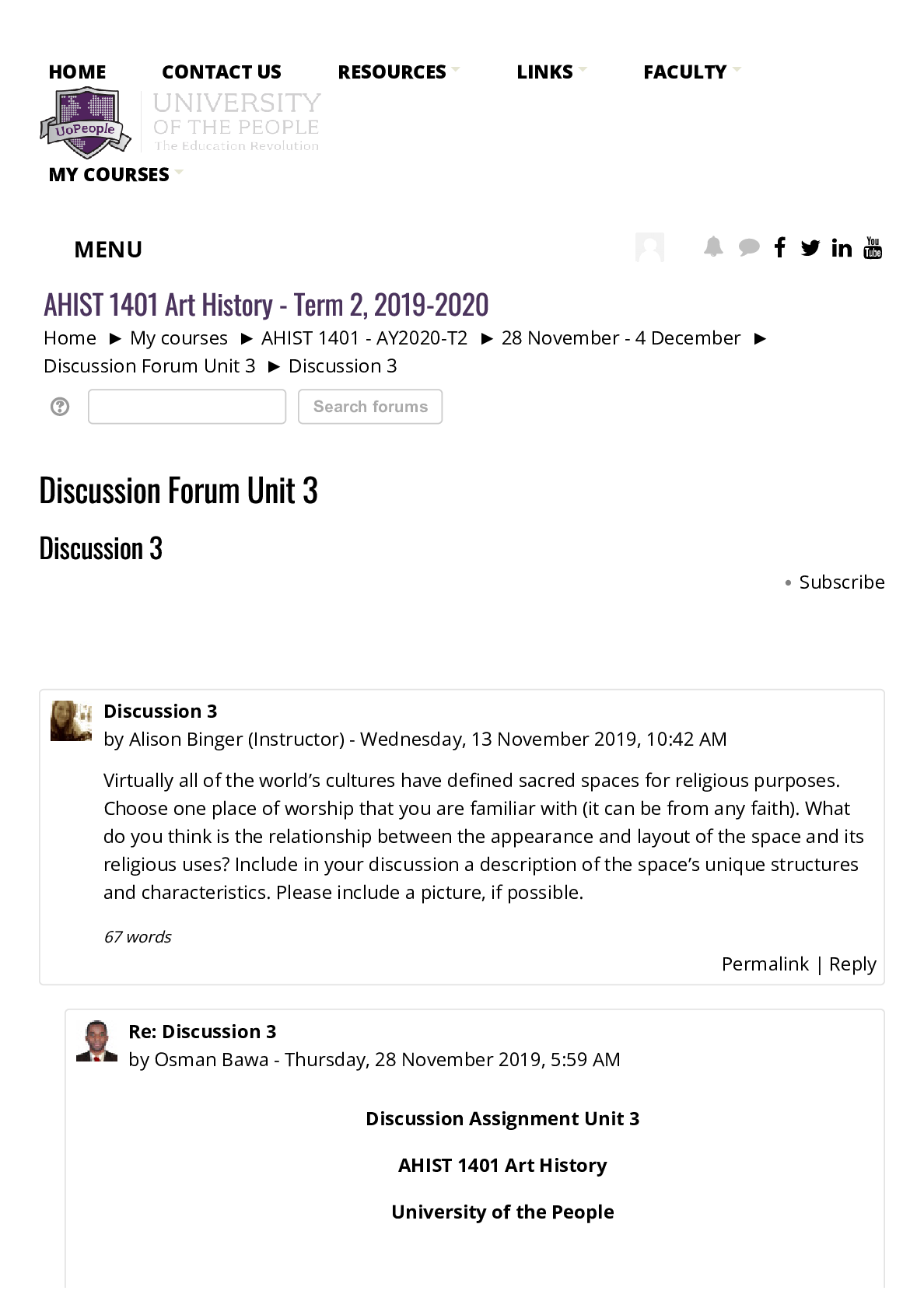


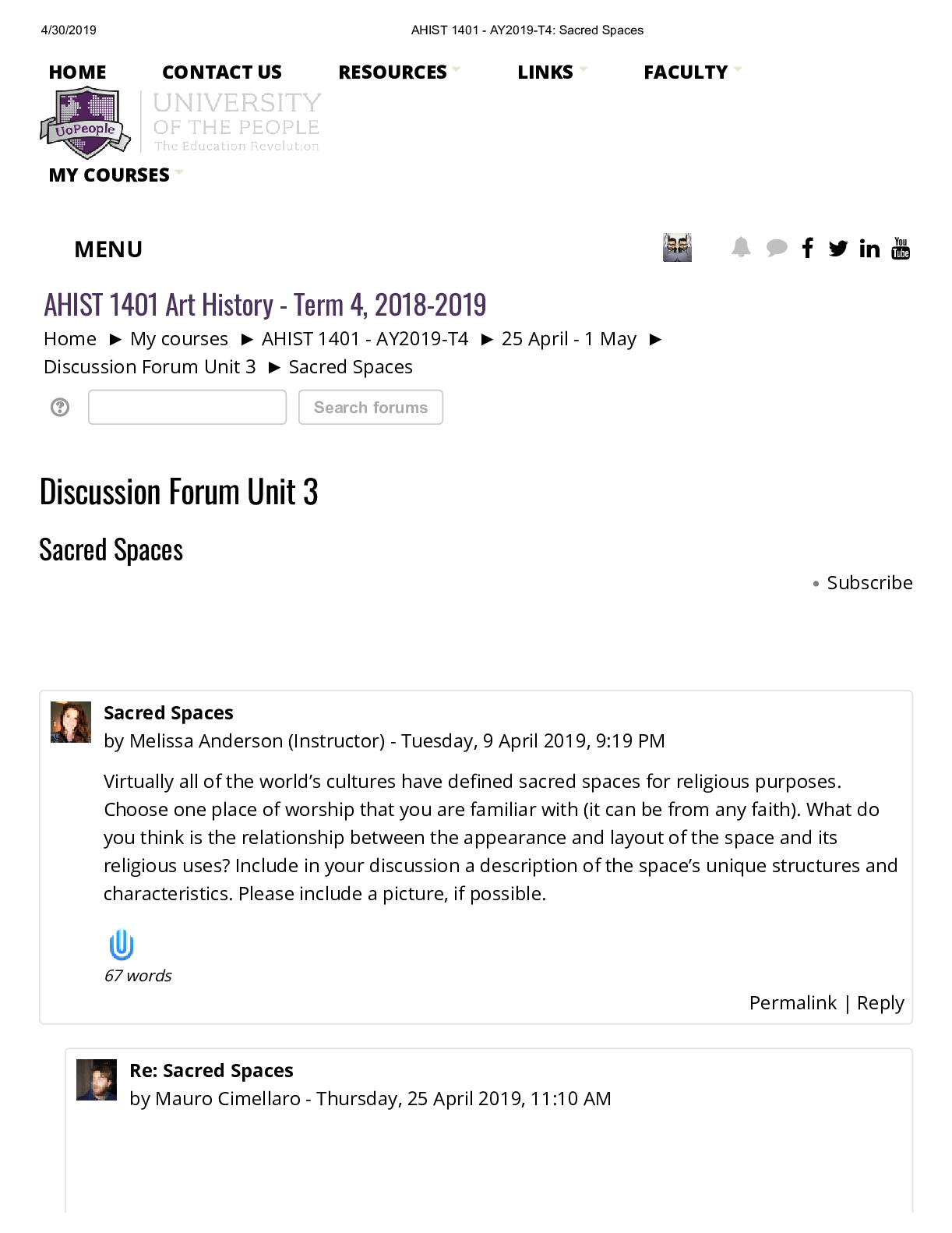

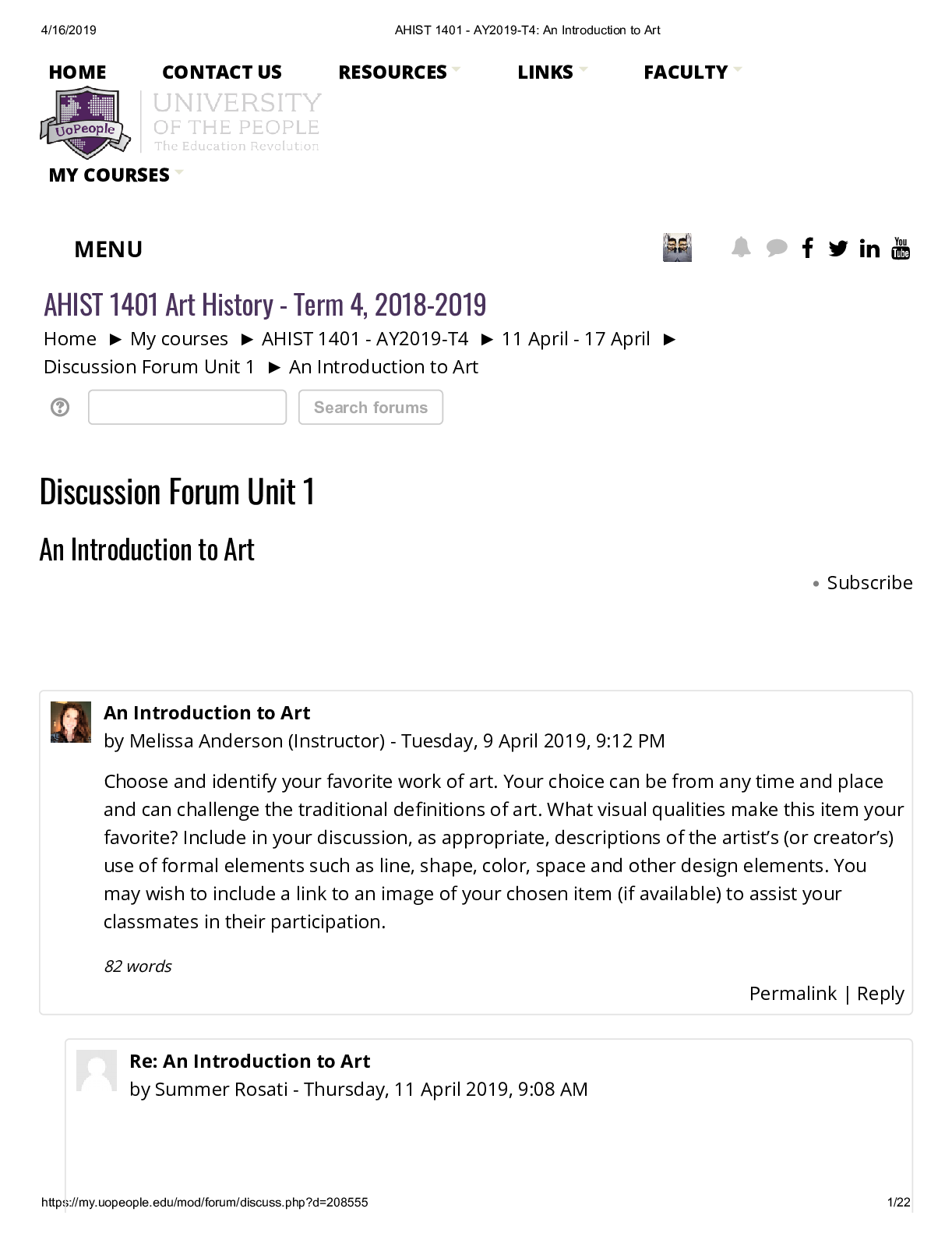
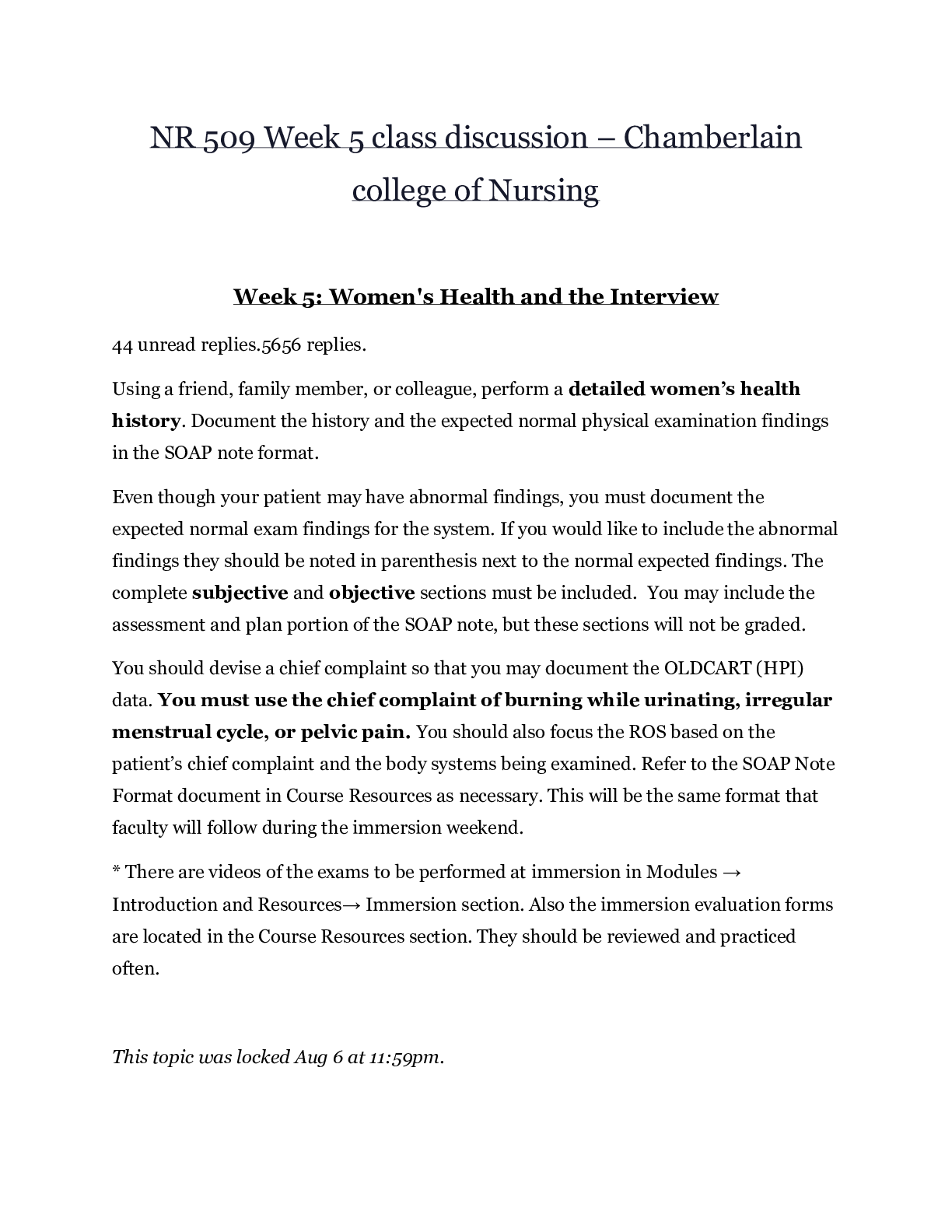
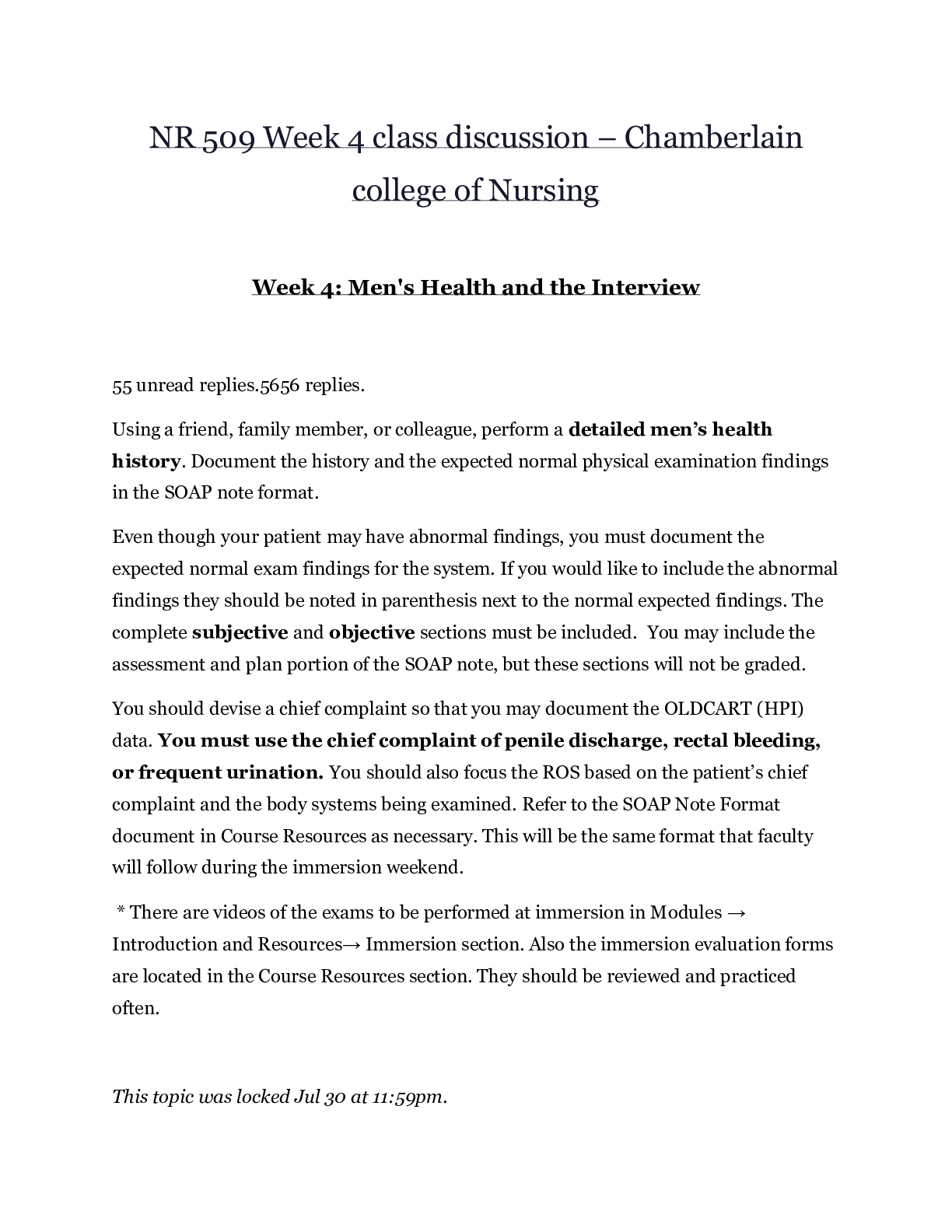
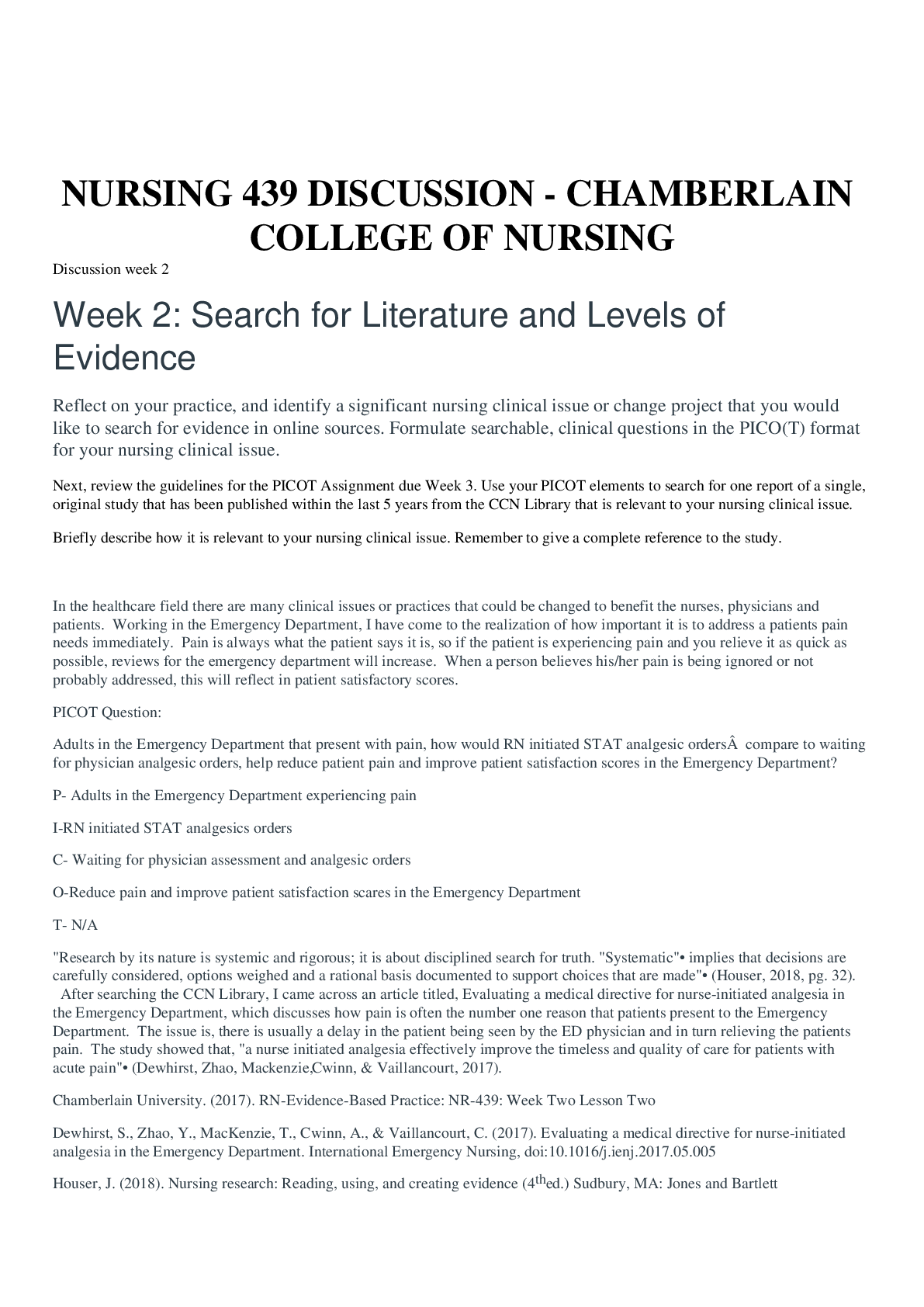
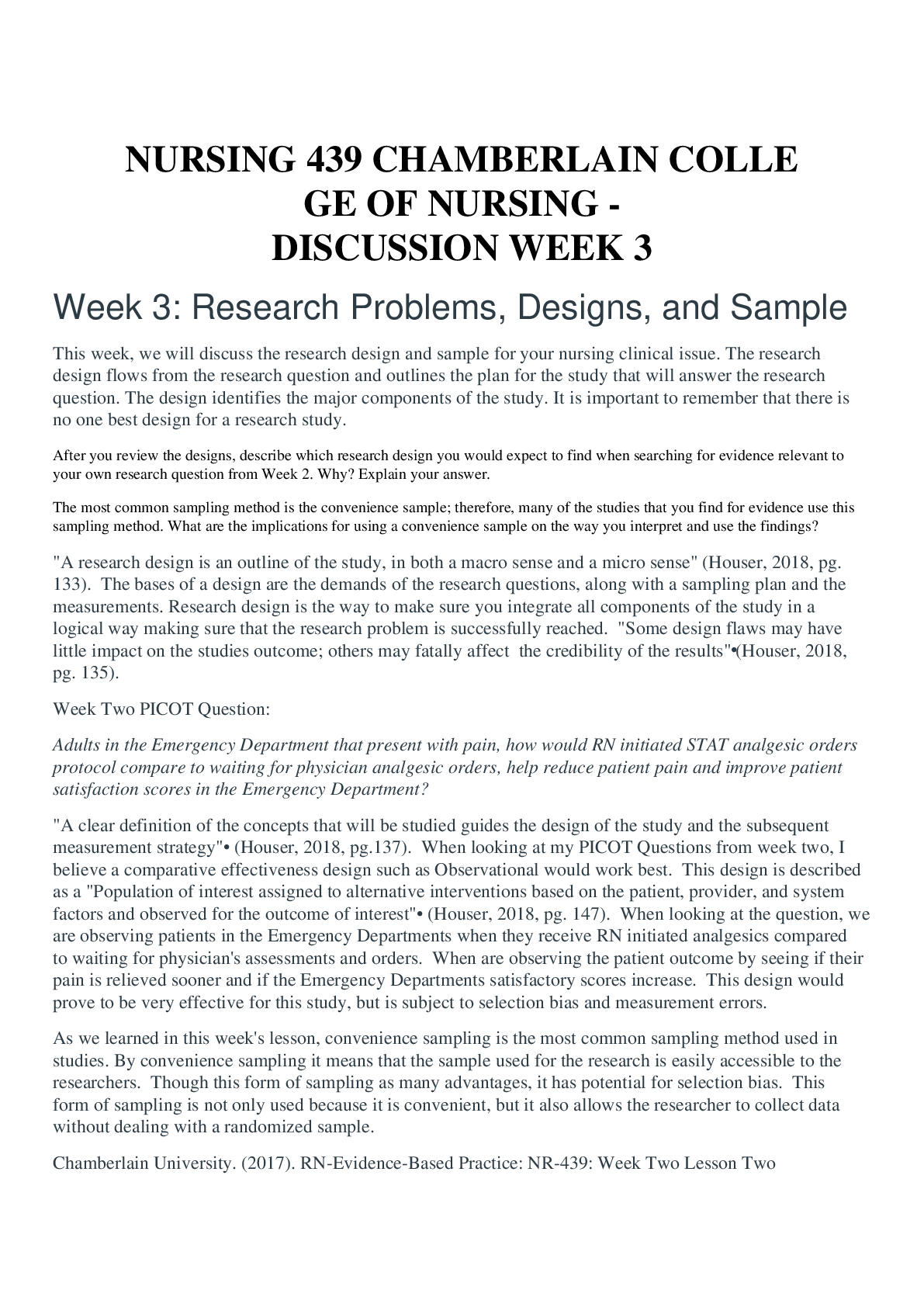
 – Chamberlain College of Nursing.png)


